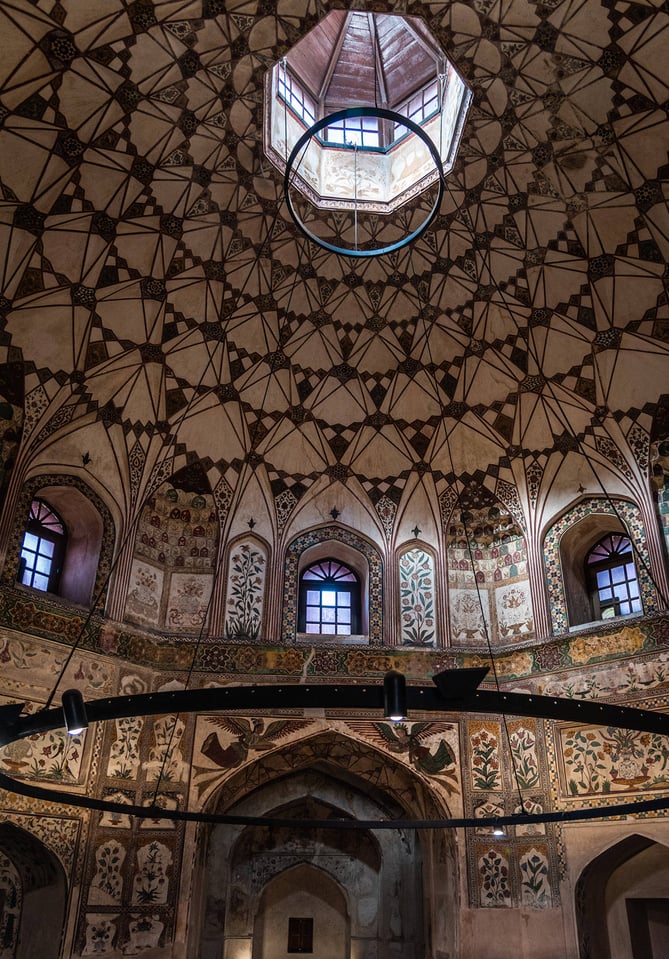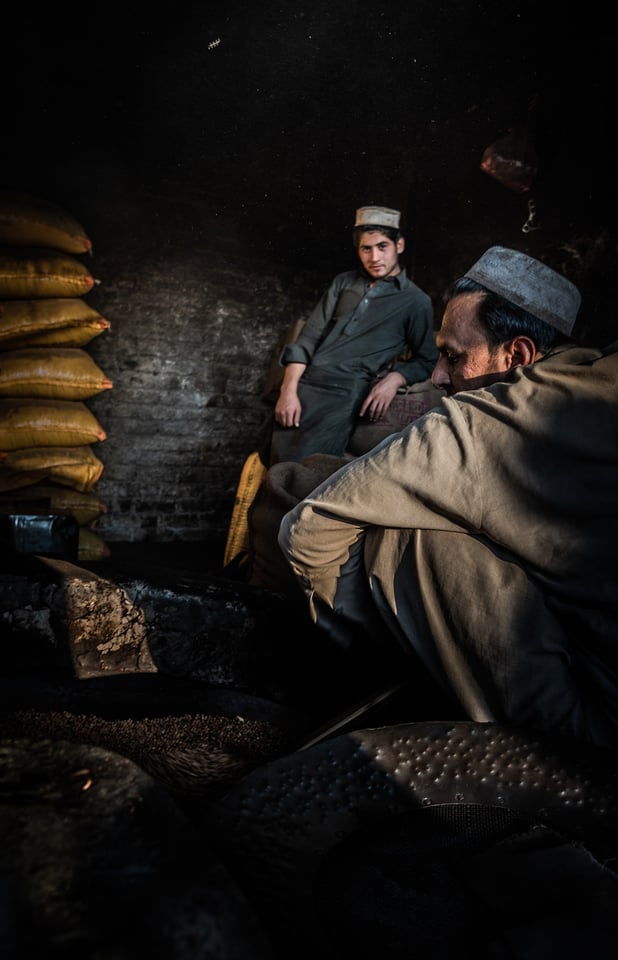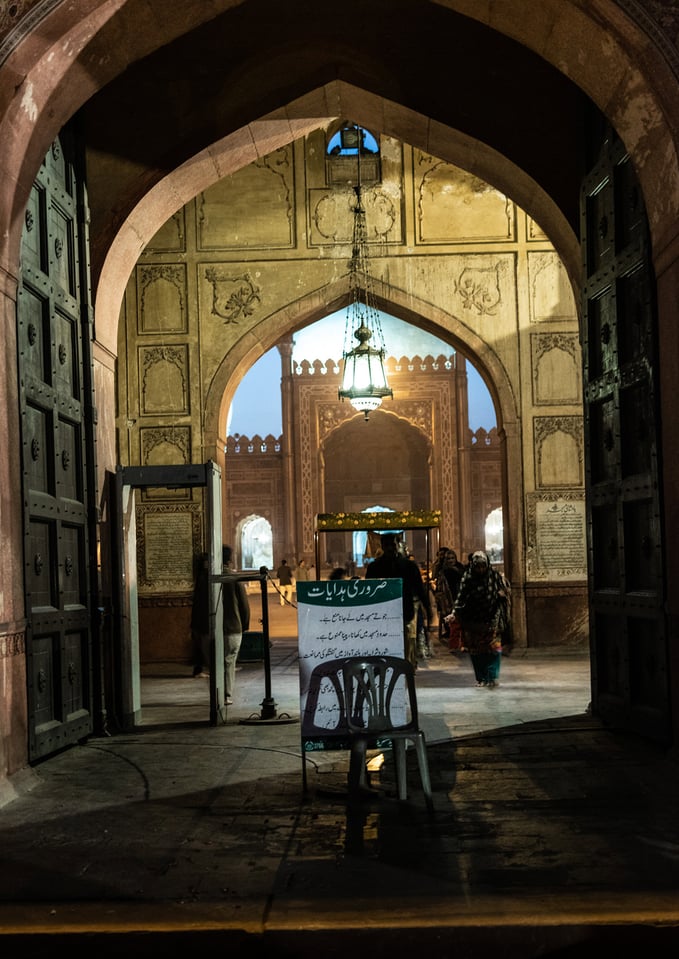Dear reader. Put down that coffee, because I’m about to let you in on a little secret: Pakistan is going to be one of the world’s next big travel destinations. What’s the matter, don’t believe me? Well, you believe Forbes, don’t you? There, I see you spilled your coffee. Hey, I warned you …
Okay, okay, I get it. You’re wondering if I’ve been living under a rock for the past decade or so. Well, I haven’t. Where I have been is Pakistan – once a year, if I can manage. See, I was born and raised there. And when you’re familiar with the region and its history, it all makes perfect sense. At the crossroads of the Middle East, Central Asia and the Land of Five Rivers (Punj-Aab), Pakistan has a mindbogglingly diverse geography and an equally diverse culture.

Now, I don’t see many of you calling up your travel agent just yet (or whatever the modern equivalent of that is) and that’s understandable. Let’s do something else – something less risky and a lot more cost-effective: take a trip through my camera’s lens.

I just did a very short but sweet trip to the cities of Lahore and Peshawar and managed to take some photos that I’m eager to share. But before we start, a very short history lesson is called for (because it’s impossible to talk about the region without talking about the Mughals):
The Mughals were a Persianized Turko-Mongol dynasty from Central Asia that established dominion over a region spanning parts of South/Central Asia in the middle of the previous millennium. Their culture absorbed local influences over time. Pakistan’s culture today, in all aspects, from cuisine, dress, language, arts, architecture, is a product of that fusion.
All right, class over. On to the photos.
My journey started about 200 miles north of Lahore in the capital city of Islamabad. I decided to forego the modern motorway and opted instead to drive to Lahore via the ‘Grand Trunk Road,’ a modern name for a route so old that Alexander the Great’s armies marched down it. The idea was to get a feel for the real Pakistan. And it doesn’t get more real than a hazy scene with trucks racing buses, passengers perched on top with a minaret visible in the distance.

And don’t forget, there’s always the possibility of a herd of sheep crossing the road.

(Okay, I did that for effect, this was actually a side road but the underlying concept is sound.)
You know you’re in the vicinity of Lahore’s Old City when the massive Badshahi Mosque starts looming on the horizon.

This mosque was commissioned by a Mughal emperor in the 1600s. It is a magnificent structure that absolutely dominates the skyline.

You may have heard that photographers like to shoot at sunset. Well, I took that a little too literally and arrived just when the sun was about to set.

I was able to capture the last light at the entrance to the mosque, as the air was filled with the call for the sunset prayer.

The next day, I set about exploring Lahore’s historic core which is actually a Walled City with 13 gates. In so many ways, these gates are like time machines. This next scene is right out of the Arabian Nights. And yet, it is clear that Pakistan is on the cusp of a cultural transformation. My fear is that scenes like this one may vanish entirely in a few generations.

Inside the walls, my first stop was the Shahi Hammam (Royal Bath) which is a Persian-style bath built by the Mughals. It is no secret that the Mughals had a thing for the finer things in life and no where is that more obvious than in the details of the bath, including the frescoes.

Hidden deep within the Old City, Wazir Khan Mosque is an absolute gem. It pops into view after navigating some impossibly narrow maze-like streets brimming with interesting characters and scenes. It looks magnificent, even in the harsh midday sun.


As is characteristic of Mughal architecture, the frescoes inside the mosque are incredibly detailed and absolutely beautiful.

Not too far outside the Walled City one encounters the Shalimar Gardens. Commissioned by the Emperor Shah Jahan (of Taj Mahal fame) in dedication to the love of his life, Mumtaz Mahal, they are a Persian-style garden complex that was intended to replicate heaven on Earth. Since then, they have fallen into a state of neglect to the extent that it is possible to drive past them without even knowing it. And yet, as one ventures inside, it does not take much to imagine what they were like in their glory days.


Lahore has a lot more to offer but I was under a real time crunch and had to begin the six-hour freeway journey to my next destination: Peshawar. The capital of the Khyber-Pukhtunkhwa province – home to Pakistan’s Pashtun population – Peshawar is nestled in a valley surrounded by a rugged, barren terrain that is markedly different from the lush plains of the Punjab. The different geography is accompanied by a different culture, one that is less agrarian and more consistent with the lifestyle of highlanders with a pastoral nomadic past.
Again, I was constrained for time and limited myself to two of Peshawar’s top attractions: the Storyteller’s Market (Qissa Khwani Bazaar) and Food Street (Namak Mandi). When I arrived at Qissa Khwani bazaar, I expected it to be much like the other old bazaars of the region: crowded narrow streets, tiny shops, mounds of spices, foods, fruit, goods etc. And indeed it was all those things. But the thing that really struck me was the energy of the place. It was absolutely buzzing.


Of course, all that human exertion needs fuel and that came in the form of a non-stop supply of tea, with tea-runners rushing back and forth between shops with a rhythm that was resonant with the overall energy of the place.


I’ve pointed this out in my previous articles and I’ll say it again here: do not be fooled by the serious expressions on people’s faces – everyone is extremely friendly, especially to photographers. I haven’t had a bad encounter yet. Having said that, I was a little intimidated by the fierce looks this gentleman was giving me as I walked around the bazaar taking photos. When I finally mustered the courage to ask him for a shot, his face immediately lit up and he and his companion started goofing around with his hat.

A few shops down, I was so intent on capturing the action in the front that I didn’t notice the young man at the back, who was clearly intrigued by my antics.

And here’s a close-up:

By now, we’ve all have heard the tropes about the crazy traffic and the ‘controlled chaos’ in that part of the world. Well, after navigating some streets of the bazaar, I can say with confidence that the guy with the British accent on the TV show was, indeed, keeping it real.

There are a few monuments and landmarks in and around the bazaar that I wanted to capture, but the sun was setting and I had to move on, so I settled for this one at Yadgar Chowk (Memorial Point).

At this point I had to make a critical decision. Take this once in a lifetime opportunity to photograph some of the city’s iconic landmarks or … eat some lamb. Naturally, I opted for the lamb.

Peshawar’s food street serves up all kinds of insanely delicious fare, but the two main attractions are lamb kebabs …

… and Karahi.

Karahi (no relation to curry) is an iconic Pakistani dish with origins in this region. It is prepared by frying meat – lamb, chicken, goat – in an oily tomato sauce in a pan called ‘Karahi’ that is similar to the Asian Wok, at very high heat. It is usually consumed with naan – flat bread baked in a clay oven, which also has its origins in Central Asia.

Finally, all that goodness gets washed down with a cup of piping hot tea.

And that’s everything I was able to do with the time I had. I’m rearing to go back and photograph the spectacular mountain scenery of the ‘Northern Areas’ but I’ve only gotten as far as the ‘Inshallah’ (as they say in Pakistan), or God-willing, stage of that plan.
Until then, signing off.

What a depiction of pakistan talha. Thank you for this. Next time you come, maybe announce a photo walk or two?
Thanks for sharing my country , it is more beautiful than this.
www.ghalibhasnain.com
fb.com/ghalib.photography
instagram.com/ghalibhasnain
Really liked your photos. I live in Northern California and have a question about air quality. Sadly, last year and in 2017 we have had horrible wildfires that have cause awful air pollution even far away where I live in San Francisco. During that time I frequented a website that listed the worst particulate air quality in the world. A few days during that time San Francisco topped the list. However, many more days, the #1 spot was a city in Pakistan. I particularly remember Lahore as frequently there. Many of your photos seemed to show very bad air quality. I wonder if you found that bothersome and if you wore a mask? Perhaps you are young and things like that don’t affect you, but for me, it would be a deterrent. It’s sad that such a beautiful place is affected by bad air, but we all want our transport. I also noticed that none of your photos showed anyone wearing masks. Is the bad air seasonal or are the people just used to it. Please note I am NOT being critical of Pakistan of anything. The USA is probably the worst polluter of the atmosphere, definitely per capita. I’m just curious about how locals deal with it, based upon my own recent experience. Anyway thanks for the virtual tour. I thought many of your photos were beautiful.
Glad you liked the images Khurt.
No political correctness necessary. The experiences that I shared are very real and common in Pakistan. What the media reports is not untrue but is a very small picture of a much larger whole.
I totally understand the concerns about traveling to Pakistan – I think that’s implicit in the framing of the essay and explicit in the words ‘next … travel destination’. In other words, there’s some work to be done before it becomes a big travel destination.
As for travel restrictions, unfortunately that’s the nature of the world we live in today. I’m an American and yet my birthplace is a barrier to entry in a quite a few countries around the world. Not to mention, there are many people who are denied entry to the US simply because of the religion they profess.
I thoroughly enjoyed Talha’s images and the spirit of “sharing” of the photo essay. From the photos and Talha’s words I understand Pakistan to be a beautiful place with beautiful people who’s culture and food I could appreciate.
With that said, I know that there Pakistan has a complicated political climate and that travel would be risky for my wife and I given our different ethnicities (I’m black and she’s Indian and a Hindu). Pakistan could be a challenge for us together and her individuallly.
There are facts and realities that no amount of political correctness can dismiss.
Ignorance is not bliss my friend.
tribune.com.pk/story…stan-bike/
en.dailypakistan.com.pk/lifes…za-valley/
www.youtube.com/watch…4ak2sJhUWY
There are loads more documented stories but I don’t have time rightnow to find those but above ones for you and all friends here. Mark Weins went all the way from near where K2 (second highest peak in the world) is to all the way to south where Karachi is. Enjoy :) Peace.
One of the most enjoyable articles on this website, Talha. I loved every image. Just moved Pakistan right up my list of places to visit :) Thank you!!
That’s really nice of you to say, Dan .. I really appreciate it.
Good article and photos is an interesting read and watch photos. When I was a young boy in Finland my cousin met some man from Pakistan and she married him. Man’s sure name was Mughal. We hang out together many times. He was really friendly like you wrote your article. Thank you a lot for my refresh good memories for that man from Pakistan. – Markku
I’m glad you enjoyed the essay Markku and that it brought back good memories, Markku. I really want to visit Finland one day.
Wonderful article and photography. My interest in Pakistan as a travel destination just went up dramatically. Thanks!
That’s great, Rick. I think adventurous travelers would do just fine. But for families and westerners expecting a certain level of comfort and luxury, I think it’ll be another 5-10 years minimum, to get there.
Salam Aleikum Tahia,
best greetings from Pakistan. Just I read your fantastic artikel. I’m following your blog since many years.
I’m a German ENT doctor and I work until tomorrow in the Hashim Welfare Hospital in Pindi Hashim near Kharian, Punjab. Our team gives hearing aids for children with hearing loss and also we instruct the hospital team, managed this in 2 years by themselve.
We are very closed by the Pakistani people. And I get so many pics from Pakistani womens, because first they want to have a selfy with me or from my wife. Not only in the hospital but also in Lahore and other places . The most people have ever seen a white person, because there is no tourism.
We enyoy the oriental hospility, but it will be a long way for tourism in Pakistan. So many problems you find in this country. I’m not able to discuss this in your blog.
Henning
Excuse my mistakes by writing English
Wa alaykum salam and Grüß dich! Dr.Henning. Thanks for following my work! Yes, I’m familiar with Kharian, spent some time there when I was kid. Kudos to you and your team for the fantastic work you’re doing there. And I agree with you, I don’t think Pakistan is ready for mass tourism yet, especially outside the major cities. But it does look like it’s something the government is taking seriously and if they stay focused, maybe they can get there in 10 years?
Anyway, thanks for commenting. Danke!